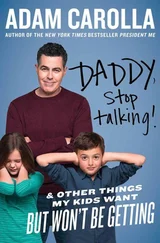One noteworthy study suggests that people who suppress negative emotions tend to leak those emotions later in unexpected ways. The psychologist Judith Grob asked people to hide their emotions as she showed them disgusting images. She even had them hold pens in their mouths to prevent them from frowning. She found that this group reported feeling less disgusted by the pictures than did those who’d been allowed to react naturally. Later, however, the people who hid their emotions suffered side effects. Their memory was impaired, and the negative emotions they’d suppressed seemed to color their outlook. When Grob had them fill in the missing letter to the word “gr_ss,” for example, they were more likely than others to offer “gross” rather than “grass.” “People who tend to [suppress their negative emotions] regularly,” concludes Grob, “might start to see the world in a more negative light.”
That’s why these days Professor Little is in restorative mode, retired from the university and reveling in his wife’s company in their house in the Canadian countryside. Little says that his wife, Sue Phillips, the director of the School of Public Policy and Administration at Carleton University, is so much like him that they don’t need a Free Trait Agreement to govern their relationship. But his Free Trait Agreement with himself provides that he do his remaining “scholarly and professional deeds with good grace,” but not “hang around longer than necessary.”
Then he goes home and snuggles by the fire with Sue.
10
THE COMMUNICATION GAP: How to Talk to Members of the Opposite Type
The meeting of two personalities is like the contact of two chemical substances; if there is any reaction, both are transformed.
CARL JUNG
If introverts and extroverts are the north and south of temperament—opposite ends of a single spectrum—then how can they possibly get along? Yet the two types are often drawn to each other—in friendship, business, and especially romance. These pairs can enjoy great excitement and mutual admiration, a sense that each completes the other. One tends to listen, the other to talk; one is sensitive to beauty, but also to slings and arrows, while the other barrels cheerfully through his days; one pays the bills and the other arranges the children’s play dates. But it can also cause problems when members of these unions pull in opposite directions.
Greg and Emily are an example of an introvert-extrovert couple who love and madden each other in equal measure. Greg, who just turned thirty, has a bounding gait, a mop of dark hair continually falling over his eyes, and an easy laugh. Most people would describe him as gregarious. Emily, a mature twenty-seven, is as self-contained as Greg is expansive. Graceful and soft-spoken, she keeps her auburn hair tied in a chignon, and often gazes at people from under lowered lashes.
Greg and Emily complement each other beautifully. Without Greg, Emily might forget to leave the house, except to go to work. But without Emily, Greg would feel—paradoxically for such a social creature—alone.
Before they met, most of Greg’s girlfriends were extroverts. He says he enjoyed those relationships, but never got to know his girlfriends well, because they were always “plotting how to be with groups of people.” He speaks of Emily with a kind of awe, as if she has access to a deeper state of being. He also describes her as “the anchor” around which his world revolves.
Emily, for her part, treasures Greg’s ebullient nature; he makes her feel happy and alive. She has always been attracted to extroverts, who she says “do all the work of making conversation. For them, it’s not work at all.”
The trouble is that for most of the five years they’ve been together, Greg and Emily have been having one version or another of the same fight. Greg, a music promoter with a large circle of friends, wants to host dinner parties every Friday—casual, animated get-togethers with heaping bowls of pasta and flowing bottles of wine. He’s been giving Friday-night dinners since he was a senior in college, and they’ve become a highlight of his week and a treasured piece of his identity.
Emily has come to dread these weekly events. A hardworking staff attorney for an art museum and a very private person, the last thing she wants to do when she gets home from work is entertain. Her idea of a perfect start to the weekend is a quiet evening at the movies, just her and Greg.
It seems an irreconcilable difference: Greg wants fifty-two dinner parties a year, Emily wants zero.
Greg says that Emily should make more of an effort. He accuses her of being antisocial. “I am social,” she says. “I love you, I love my family, I love my close friends. I just don’t love dinner parties. People don’t really relate at those parties—they just socialize . You’re lucky because I devote all my energy to you. You spread yours around to everyone.”
But Emily soon backs off, partly because she hates fighting, but also because she doubts herself. Maybe I am antisocial , she thinks. Maybe there is something wrong with me . Whenever she and Greg argue about this, she’s flooded with childhood memories: how school was tougher for her than for her emotionally hardier younger sister; how she seemed to worry more than other people did about social issues, like how to say no when someone asked her to get together after school and she preferred to stay home. Emily had plenty of friends—she’s always had a talent for friendship—but she never traveled in packs.
Emily has suggested a compromise: What if Greg gives his dinner parties whenever she’s out of town visiting her sister? But Greg doesn’t want to host dinners by himself. He loves Emily and wants to be with her, and so does everyone else, once they get to know her. So why does Emily withdraw?
This question, for Greg, is more than mere pique. Being alone for him is a kind of Kryptonite; it makes him feel weak. He had looked forward to a married life of shared adventures. He’d imagined being part of a couple at the center of things. And he’d never admitted it to himself, but for him being married meant never having to be by himself. But now Emily is saying that he should socialize without her. He feels as if she’s backing out of a fundamental part of their marriage contract. And he believes that something is indeed wrong with his wife.
* * *
Is something wrong with me? It’s not surprising that Emily asks herself this question, or that Greg aims this charge at her. Probably the most common—and damaging—misunderstanding about personality type is that introverts are antisocial and extroverts are pro-social. But as we’ve seen, neither formulation is correct; introverts and extroverts are differently social. What psychologists call “the need for intimacy” is present in introverts and extroverts alike. In fact, people who value intimacy highly don’t tend to be, as the noted psychologist David Buss puts it, “the loud, outgoing, life-of-the-party extrovert.” They are more likely to be someone with a select group of close friends, who prefers “sincere and meaningful conversations over wild parties.” They are more likely to be someone like Emily.
Conversely, extroverts do not necessarily seek closeness from their socializing. “Extroverts seem to need people as a forum to fill needs for social impact, just as a general needs soldiers to fill his or her need to lead,” the psychologist William Graziano told me. “When extroverts show up at a party, everyone knows they are present.”
Your degree of extroversion seems to influence how many friends you have, in other words, but not how good a friend you are. In a study of 132 college students at Humboldt University in Berlin, the psychologists Jens Aspendorf and Susanne Wilpers set out to understand the effect of different personality traits on students’ relationships with their peers and families. They focused on the so-called Big Five traits: Introversion-Extroversion; Agreeableness; Openness to Experience; Conscientiousness; and Emotional Stability. (Many personality psychologists believe that human personality can be boiled down to these five characteristics.)
Читать дальше
![Сьюзан Кейн Quiet [The Power of Introverts in a World That Can't Stop Talking] обложка книги](/books/33084/syuzan-kejn-quiet-the-power-of-introverts-in-a-wo-cover.webp)











